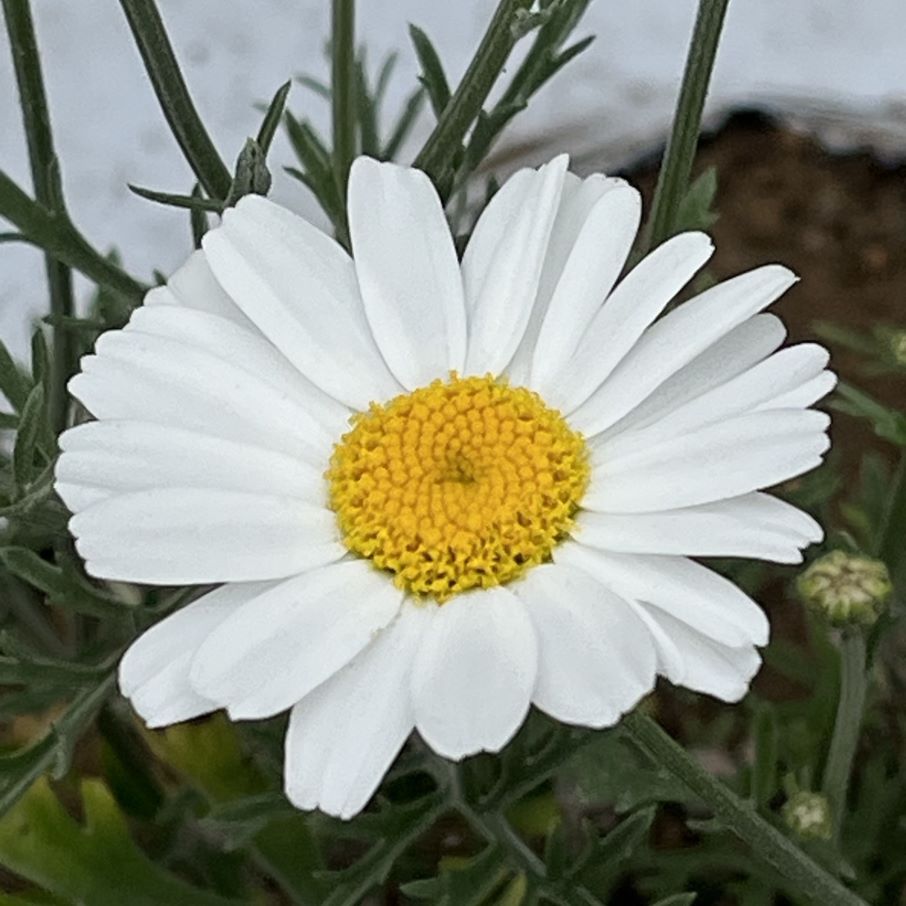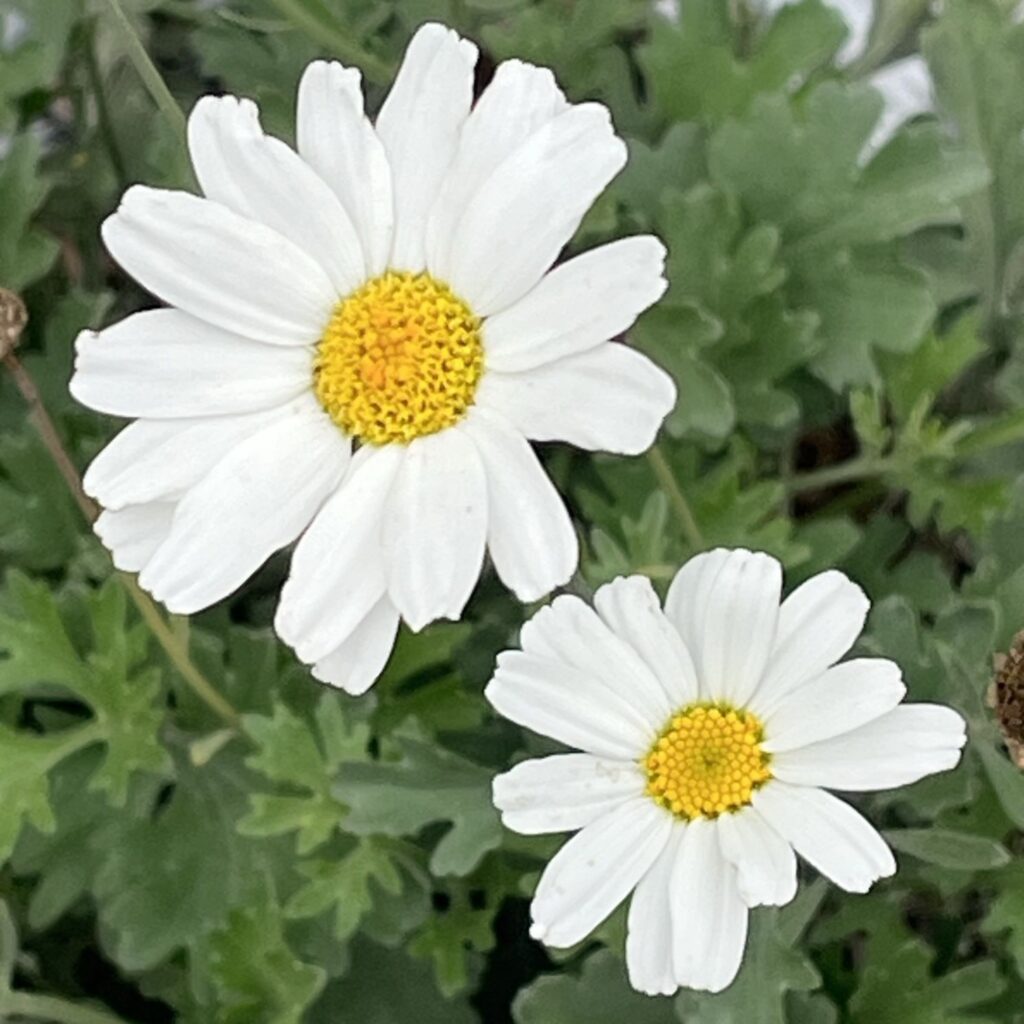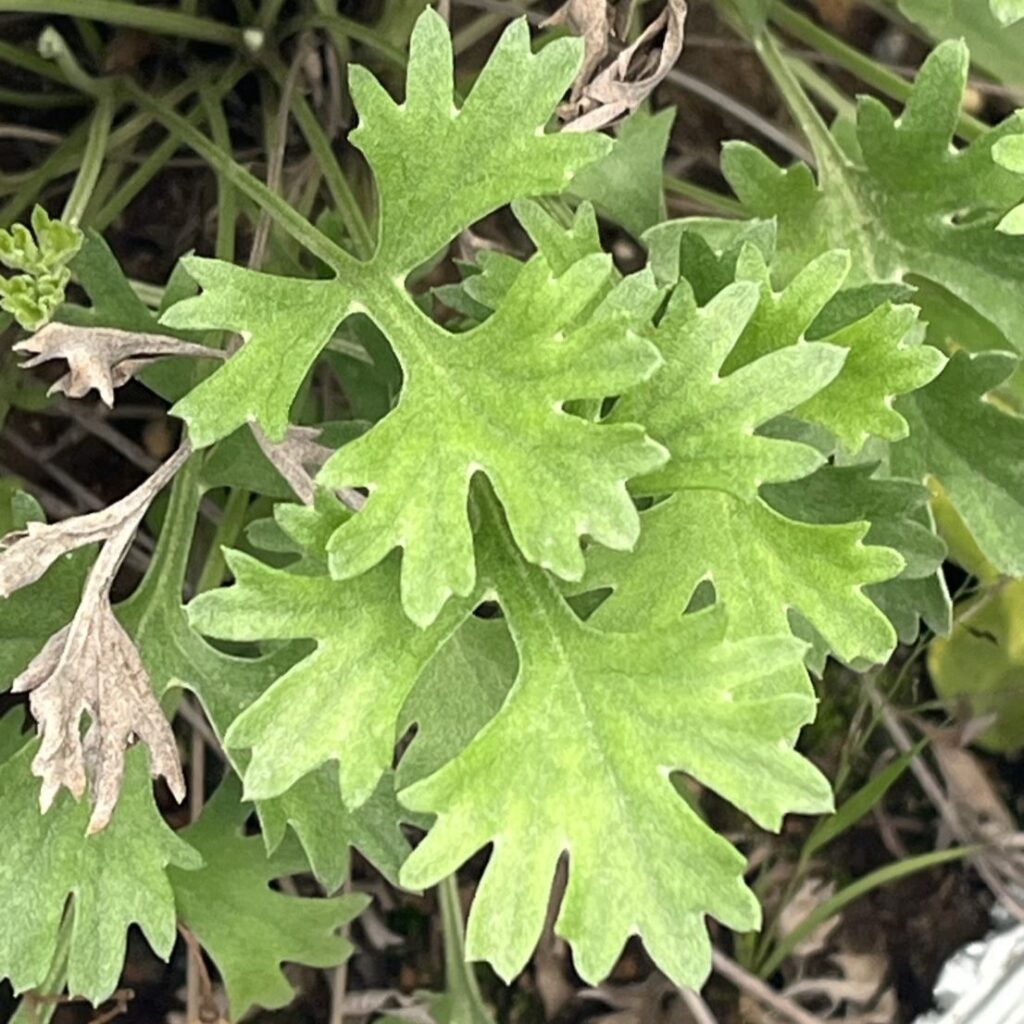シロバナムシヨケギクは花に殺虫成分が含まれます。昔は蚊取り線香や農薬用に栽培。今は観賞用に庭植えや鉢植えで優美な花を咲かせます。
Dalmatian Chrysanthemum contains insecticidal ingredients in its flowers. In the past, it was cultivated for mosquito coils and pesticides. Now, it blooms gracefully in gardens and pots for ornamental purposes.
【仮名】シロバナムシヨケギク, ジョチュウギク
【和名】白花虫除菊, 除虫菊
【英名】Dalmatian Chrysanthemum, Dalmatian Pyrethrum
【学名】Tanacetum cinerariifolium
【誕生】05/ 14, 09/ 23
【開花】05, 06, 07, 08, 09, 10月
【花色】White
シロバナムシヨケギク
シロバナムシヨケギクの概要

シロバナムシヨケギクはキク科の多年草。原産地はバルカン半島の北西部で、日本へは1886年に渡来しました。花に殺虫成分が含まれるため、昔は蚊取り線香や農薬用に栽培されましたが、作用・構造の似ている化合物へと代替。今は観賞用に庭植えや鉢植えで優美な花を咲かせます。
シロバナムシヨケギクの名前

シロバナムシヨケギクの和名は「花が白色で、虫を寄せつけない菊」という意味。英名は欧州クロアチアのアドリア海沿岸地域「ダルマティア」に由来します。ラテン語の属名タナセツムは「不死」という意味。種小名シネラリフォリウムは同じキク科の「シネラリア」に由来します。
シロバナムシヨケギクの姿形

シロバナムシヨケギクの茎は固く、下方で直立、上方で分岐。根生葉は叢生で柄が長く、茎生葉は互生で羽状に深く裂けます。茎も葉も白色の毛が密生。花はマーガレットに似ていて、真ん中に黄色の筒状花が集まって盛り上がり、周りに白色の舌状花が並びます。花後は痩果を形成。
シロバナムシヨケギクの利用

シロバナムシヨケギクは花に神経系の殺虫成分ピレトリンを含みます。ヒトへの毒性が低く、分解・無毒化が早いため、農薬などに利用されましたが、今は合成ピレスロイドに代替。ピレトリンは子房中の胚珠に含まれ、花蜜や花粉に含まれないため、蝶々や蜜蜂の訪花を妨げません。
Dalmatian Chrysanthemum

Dalmatian Chrysanthemum is a perennial plant of the Asteraceae family. It is native to the northwestern part of the Balkan Peninsula and was introduced to Japan in 1886. In the past, it was cultivated for mosquito coils and pesticides because its flowers contain insecticidal ingredients, but they have been replaced by compounds with similar effects and structures. Now, it blooms gracefully in gardens and pots for ornamental purposes.
The Japanese name of Dalmatian Chrysanthemum means “a chrysanthemum with white flowers that repels insects.” The English name comes from Dalmatia, a region on the Adriatic coast of Croatia in Europe. The Latin genus name Tanacetum means “immortality.” The specific name cinerariifolium comes from “cineraria” in the same Asteraceae family.
The stems of Dalmatian Chrysanthemum are stiff, erect at the bottom, and branched at the top. The basal leaves are clumpy and long-stalked, while the stem leaves are alternate and deeply pinnately lobed. Both the stems and leaves are densely covered with white hairs. The flowers resemble daisies, with yellow tubular flowers gathering in the middle and white ray-shaped flowers lining the sides. After flowering, achenes form.
Dalmatian Chrysanthemum contains pyrethrin, an insecticidal compound of the nervous system, in its flowers. It was used as a pesticide because it has low toxicity to humans and decomposes and becomes non-toxic quickly, but has now been replaced by synthetic pyrethroid. Pyrethrin is contained in the ovules in the ovary, but is not contained in nectar or pollen, so it does not prevent butterflies and bees from visiting the flowers.


